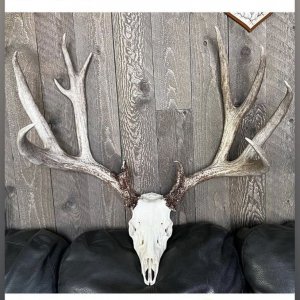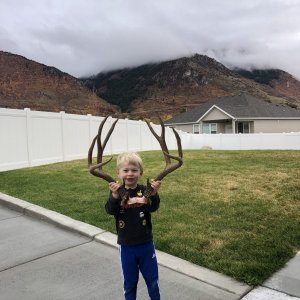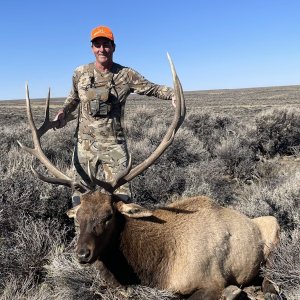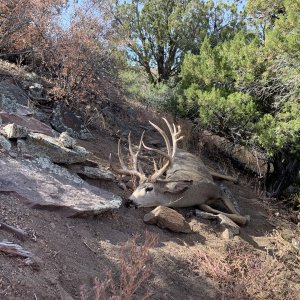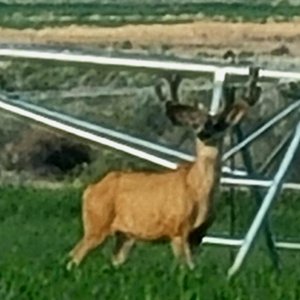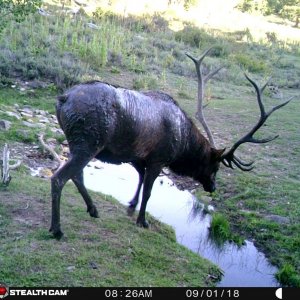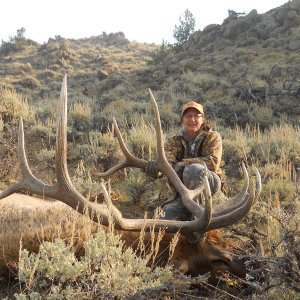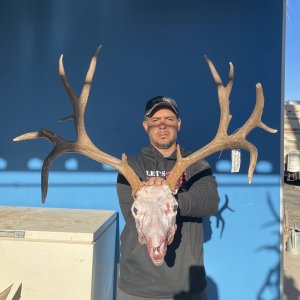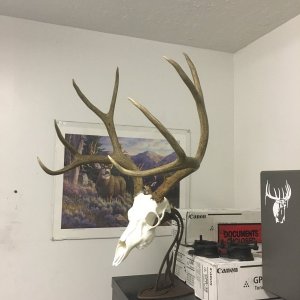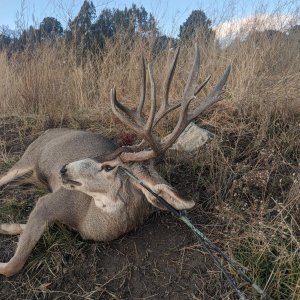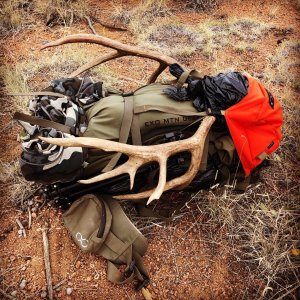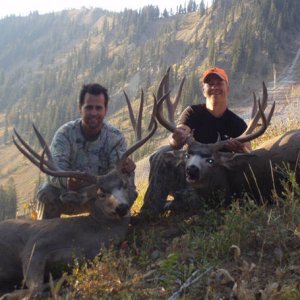My guess is that most Wyo residents driving down the highways ask themselves what has happened to all the antelope and deer in prairie country the past few years? It's pretty sad driving down the highways to a wasteland of nothing put prairie in absolute horrid condition with few to no scattered antelope and deer in miles upon miles of country. Browse and forb species across many counties in Wyoming that is utilized by mule deer and antelope is in absolute horrible condition. There is no wonder populations are at an all time low in many counties.
First and foremost, similar to alcoholism it's important to recognize the problem. Next, it's imperative to do something about it!
I thought I would start a new post that offers suggestions and recommendations for the long-term downward trend of mule deer and antelope in Wyoming. Feel free to add any comments and observations from the particular areas where you spend time in the field. It would be great to share your experiences with disease, drought, poor range condition, big game highway casualties, etc.
What is the browse species condition in your particular area? Are there plenty of water sources through the summer? Have there been any outbreaks of CWD, EHD, other diseases in your area? How about roadkill? How are the predators. Are you seeing fawns and are fawns surviving through the summer, fall, and winter in your area?
Many may not be aware, but even with drought and extremely tough winters there are management schemes and projects that will deliver almost immediate positive results! Obviously some strategies may take time but I can pretty much guarantee almost immediate results with others! Healthy habitat leads to healthy does and fawns to battle difficult weather conditions, predators, and disease! It's obvious all of us would enjoy seeing more wildlife on the landscape!
Yep, the timing is right to do the right thing and work directly on making immediate changes in the field that can potentially change the downward trend of what’s happening to Wyo’s deer and antelope!
Yep, there is expense associated with these projects. Many Wyo residents may not be aware but there are actually millions of $ in grants available to fund such projects. We've taken full advantage of this funding in Colorado and the same thing is currently be used to fund such projects in Sublette, Carbon, Fremont, Sheridan and other counties scattered across Wyoming.
My goal with this post is to showcase some of the projects currently taking place in Wyoming that will benefit habitat and wildlife health as well as some of the problem areas!
The last thing I would like is a fighting match between Wyo res and nonres. This post is exclusively for bringing attention to projects that can potentially benefit wildlife and wildlife habitat in Wyoming.
First and foremost, similar to alcoholism it's important to recognize the problem. Next, it's imperative to do something about it!
I thought I would start a new post that offers suggestions and recommendations for the long-term downward trend of mule deer and antelope in Wyoming. Feel free to add any comments and observations from the particular areas where you spend time in the field. It would be great to share your experiences with disease, drought, poor range condition, big game highway casualties, etc.
What is the browse species condition in your particular area? Are there plenty of water sources through the summer? Have there been any outbreaks of CWD, EHD, other diseases in your area? How about roadkill? How are the predators. Are you seeing fawns and are fawns surviving through the summer, fall, and winter in your area?
Many may not be aware, but even with drought and extremely tough winters there are management schemes and projects that will deliver almost immediate positive results! Obviously some strategies may take time but I can pretty much guarantee almost immediate results with others! Healthy habitat leads to healthy does and fawns to battle difficult weather conditions, predators, and disease! It's obvious all of us would enjoy seeing more wildlife on the landscape!
Yep, the timing is right to do the right thing and work directly on making immediate changes in the field that can potentially change the downward trend of what’s happening to Wyo’s deer and antelope!
Yep, there is expense associated with these projects. Many Wyo residents may not be aware but there are actually millions of $ in grants available to fund such projects. We've taken full advantage of this funding in Colorado and the same thing is currently be used to fund such projects in Sublette, Carbon, Fremont, Sheridan and other counties scattered across Wyoming.
My goal with this post is to showcase some of the projects currently taking place in Wyoming that will benefit habitat and wildlife health as well as some of the problem areas!
The last thing I would like is a fighting match between Wyo res and nonres. This post is exclusively for bringing attention to projects that can potentially benefit wildlife and wildlife habitat in Wyoming.
Last edited:





